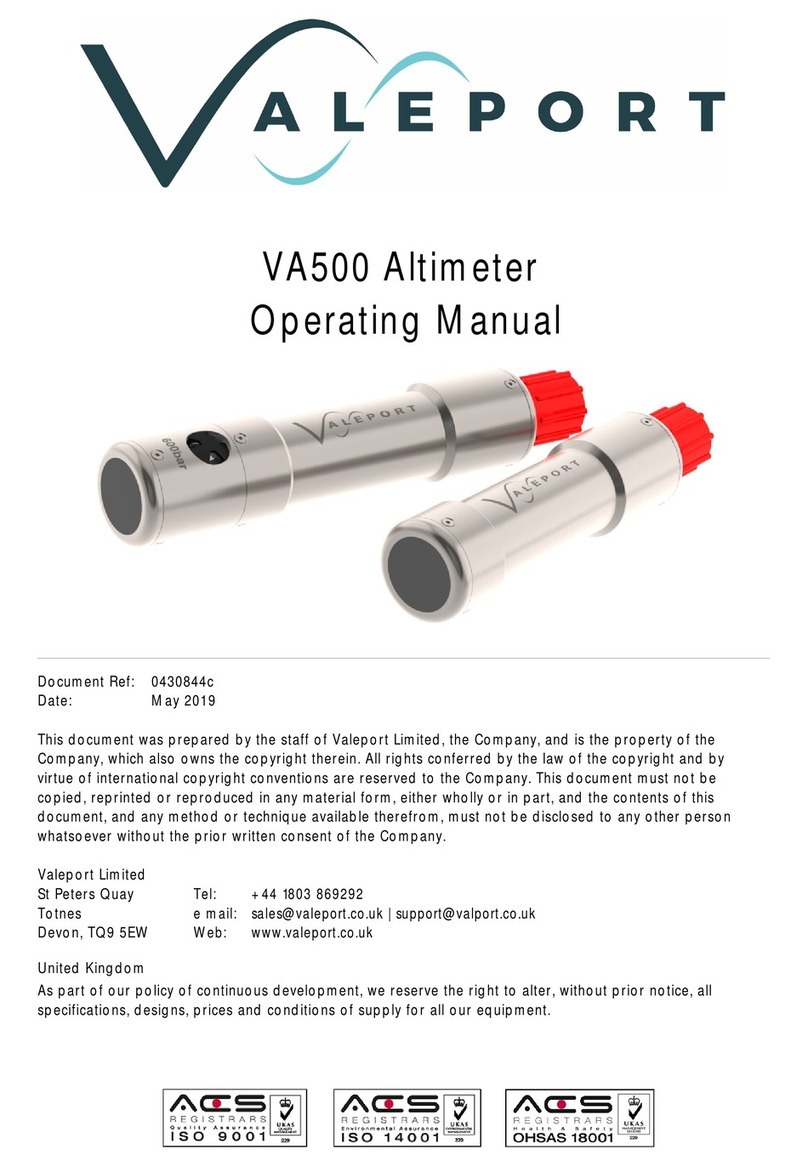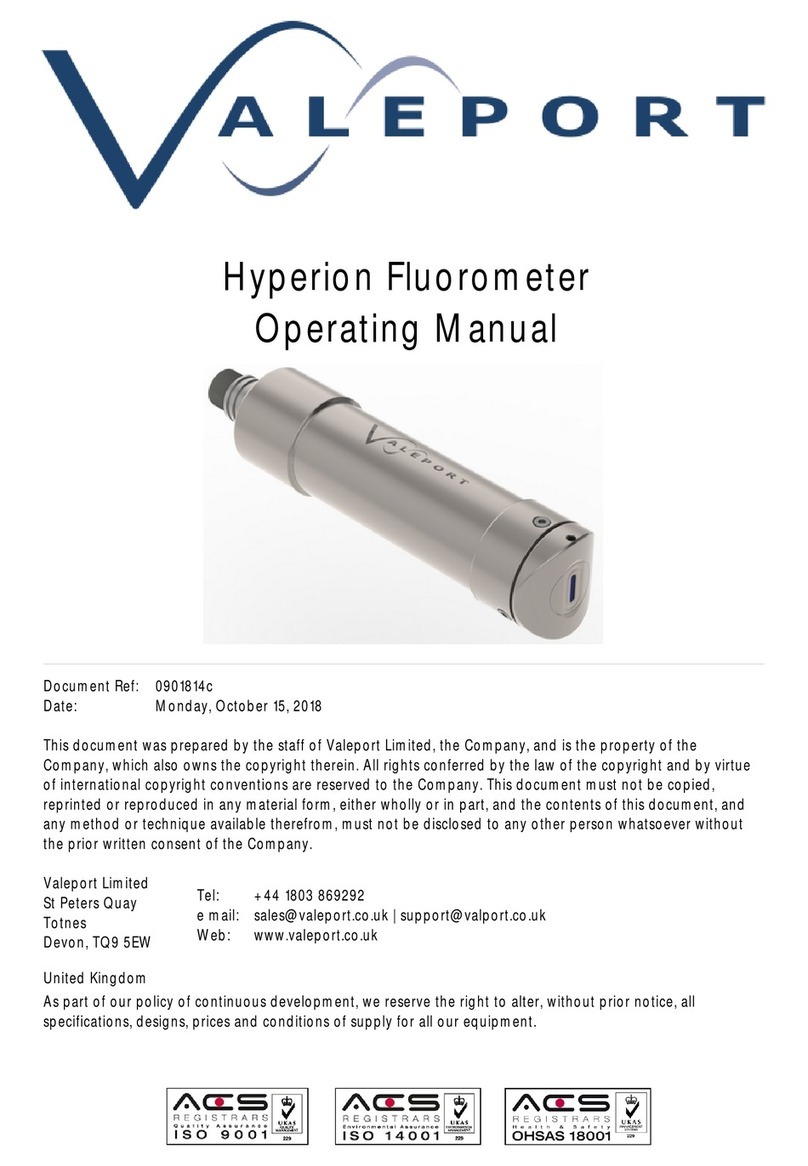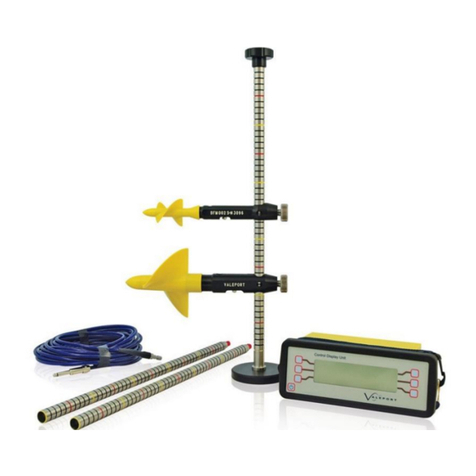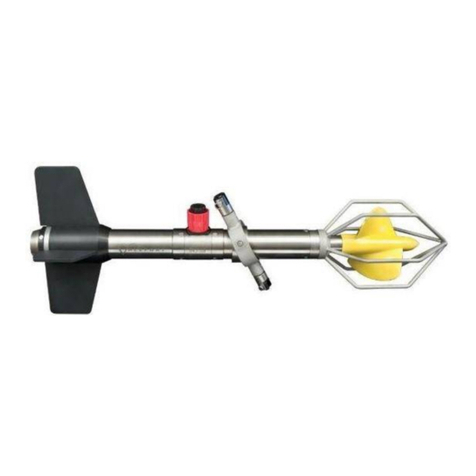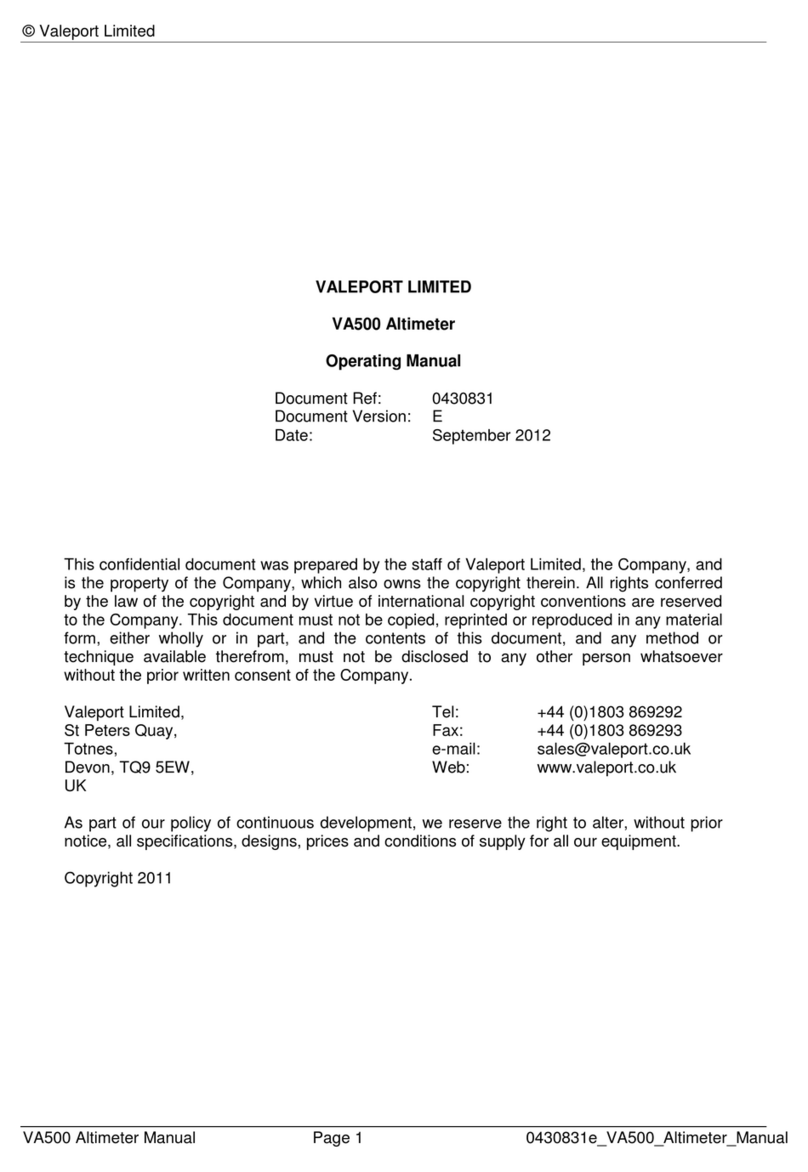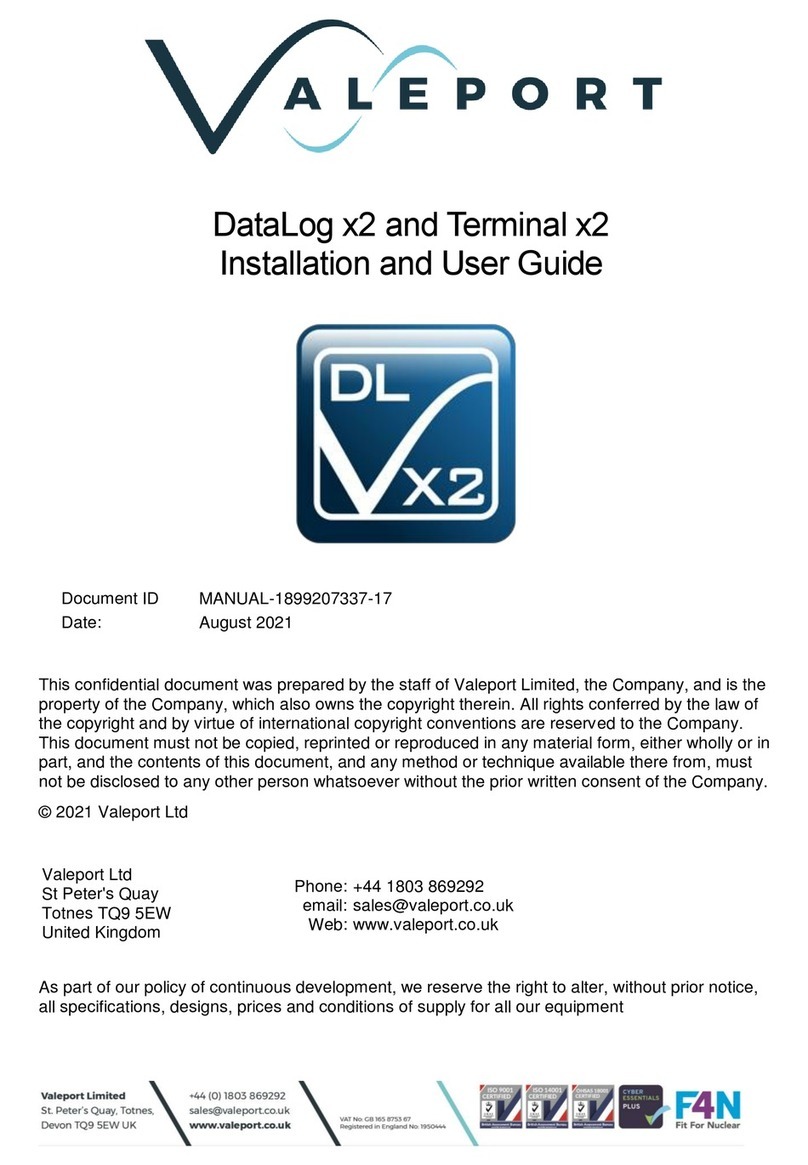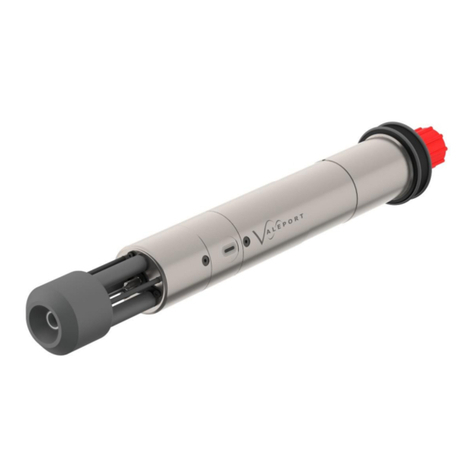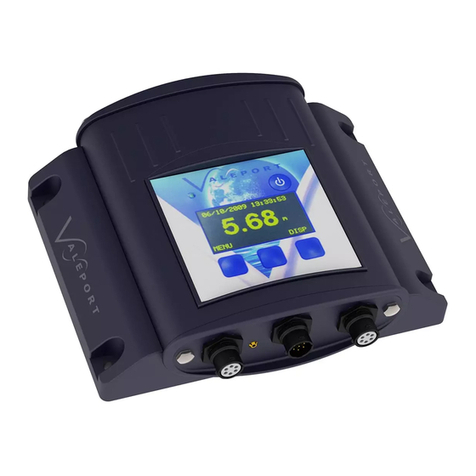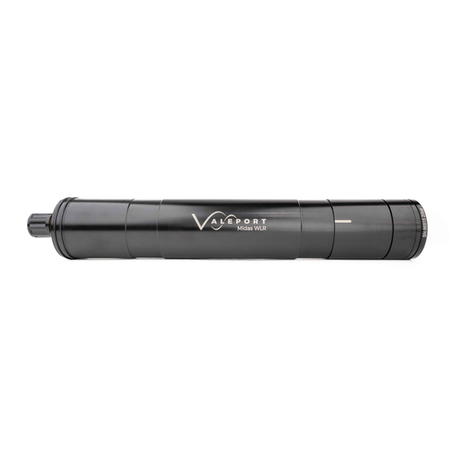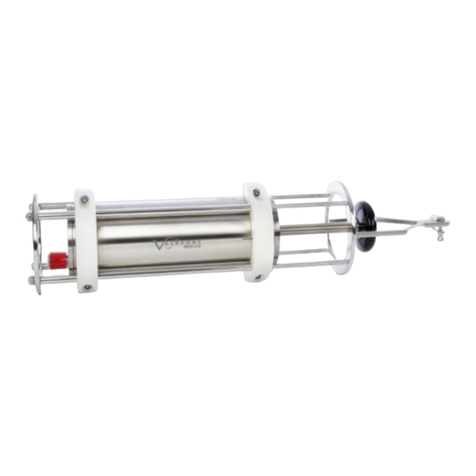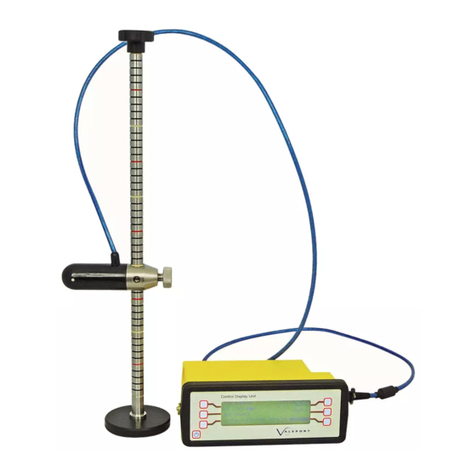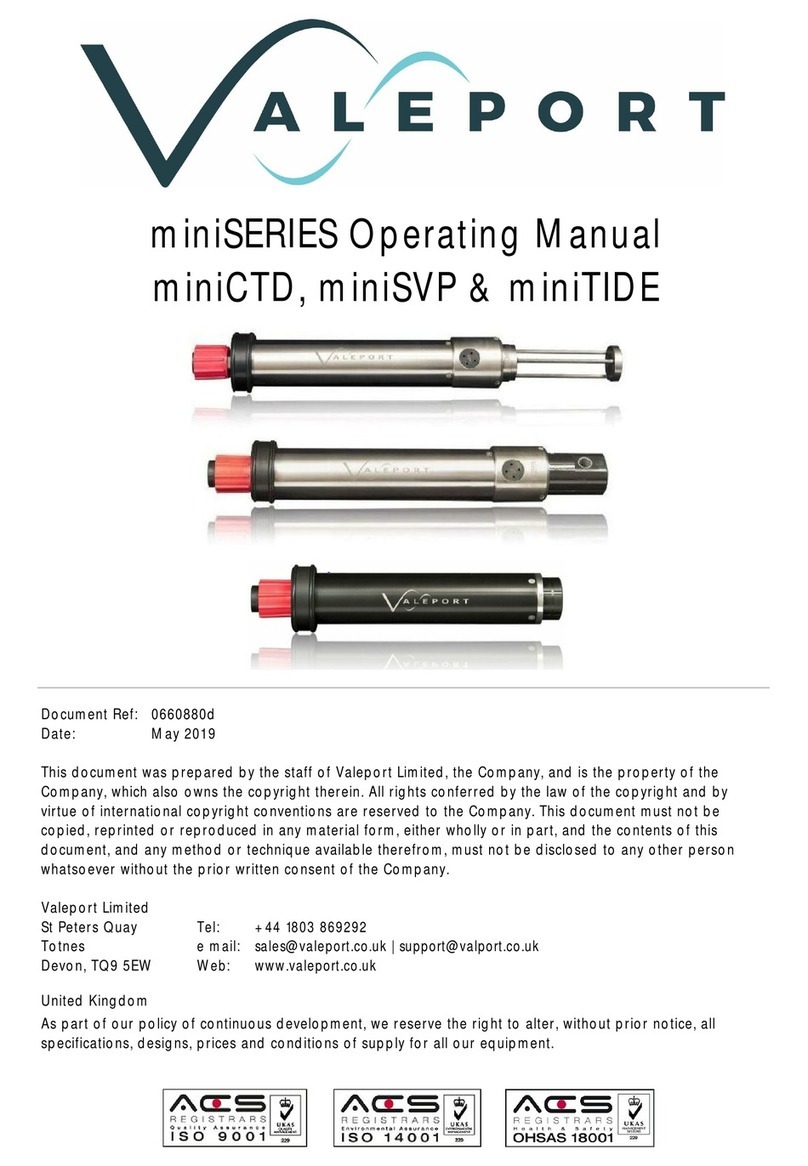
Table of Contents
Valeport Ltd © 2019 Page 2
Table of Contents
..................................................................................................................................... 41. Introduction
.................................................................................................................................... 41.1. Description .................................................................................................................................... 51.2. Specification
1.2.1 Power Supply
.................................................................................................................................... 5
1.2.2 Data Acquisition
.................................................................................................................................... 5
1.2.3 Data Output
.................................................................................................................................... 5
1.2.4 Physical .................................................................................................................................... 6
..................................................................................................................................... 82. Installation and Operation
.................................................................................................................................... 82.1. Hardware
2.1.1 Physical Installation
.................................................................................................................................... 8
2.1.2 Electrical Connections
.................................................................................................................................... 9
2.1.3 Communications Leads
.................................................................................................................................... 9
.................................................................................................................................... 92.2. Operation
2.2.1 Data Output Communications
.................................................................................................................................... 9
2.2.2 Changing the Baud Rate
.................................................................................................................................... 10
2.2.3 Changing Data Rate
.................................................................................................................................... 10
2.2.4 Changing the Data Format
.................................................................................................................................... 10
2.2.5 Reading Serial Number and Software Version
.................................................................................................................................... 11
2.2.6 Changing the Baud Rate of the RS485 Adaptor
.................................................................................................................................... 11
2.2.7 Optional Analogue Output
.................................................................................................................................... 12
..................................................................................................................................... 133. Filters
..................................................................................................................................... 144. Selecting the Output Protocol
.................................................................................................................................... 144.1. RS232 Communications
.................................................................................................................................... 144.2. RS485 Communications
.................................................................................................................................... 144.3. Analogue Output
..................................................................................................................................... 155. Trouble Shooting
..................................................................................................................................... 166. Maintenance
.................................................................................................................................... 166.1. Cleaning .................................................................................................................................... 166.2. Seal Sizes
..................................................................................................................................... 177. Appendix 1 - Electrical Connections
.................................................................................................................................... 177.1. RS232 Communications Lead
.................................................................................................................................... 177.2. RS485 Communications Lead
